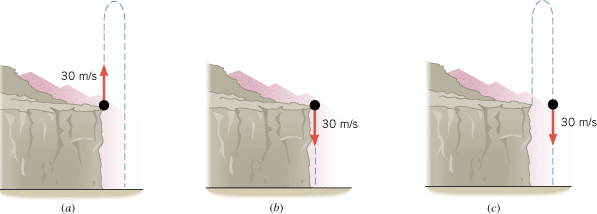Figure 2.20a shows a pellet, having been fired from a gun, moving straight upward from the edge of a cliff. The initial speed of the pellet is 30 m/s. It goes up and then falls back down, eventually hitting the ground beneath the cliff. In Figure 2.20b the pellet has been fired straight downward at the same initial speed. In the absence of air resistance, does the pellet in part b strike the ground beneath the cliff with a smaller, a greater, or the same speed as the pellet in part a?
 |
|
Reasoning and Solution Because air resistance is absent, the motion is that of free-fall, and the symmetry inherent in free-fall motion offers an immediate answer to the question. Figure 2.20c shows why. This part of the drawing shows the pellet after it has been fired upward and then fallen back down to its starting point. Symmetry indicates that the speed in part c is the same as in part a![]() —
—![]() namely, 30 m/s. Thus, part c is just like part b, where the pellet is actually fired downward with a speed of 30 m/s. Consequently, whether the pellet is fired as in part a or part b, it starts to move downward from the cliff edge at a speed of 30 m/s. In either case, there is the same acceleration due to gravity and the same displacement from the cliff edge to the ground below. Under these conditions, the pellet reaches the ground with the same speed no matter in which vertical direction it is fired initially.
namely, 30 m/s. Thus, part c is just like part b, where the pellet is actually fired downward with a speed of 30 m/s. Consequently, whether the pellet is fired as in part a or part b, it starts to move downward from the cliff edge at a speed of 30 m/s. In either case, there is the same acceleration due to gravity and the same displacement from the cliff edge to the ground below. Under these conditions, the pellet reaches the ground with the same speed no matter in which vertical direction it is fired initially.
Related Homework: Problems 43 , 46